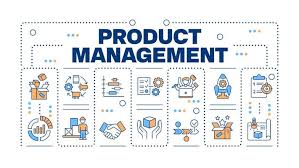What is product due diligence and what are its primary objectives?
Due diligence is the undisputed watchword. But as technology permeates every facet of business, a specialized form of scrutiny has become increasingly vital: Product Due Diligence.
Understanding Product Due Diligence
At its core, Product Due Diligence is the comprehensive evaluation of the technological aspects of a target company, with a specific focus on its products, software systems, and the underlying infrastructure that supports them, prior to an acquisition, merger, or significant investment. Often referred to interchangeably with Technical Due Diligence when discussing products, it delves deep into an organization's tech infrastructure, software systems, intellectual property, cybersecurity measures, and the capabilities of its IT staff.
This rigorous "health check" goes beyond superficial assessments, examining everything from the product's architecture and codebase quality to its scalability, operational processes, and strategic alignment with market trends. The ultimate goal is to provide potential buyers or investors with an unbiased, detailed understanding of the product's current state, its potential, and any associated risks.
The Imperative Objectives of Product Due Diligence
Product Due Diligence is not merely a formality; it's a strategic imperative designed to protect investments and ensure long-term success. Its primary objectives are multi-faceted:
• Risk Mitigation: This is perhaps the most critical objective. Product Due Diligence is designed to uncover hidden technological risks that could severely impact post-transaction operations or the product's viability. These risks can range from cybersecurity vulnerabilities and outdated systems to poor code quality, scalability limitations, and intellectual property disputes. Identifying these issues early allows for proactive strategizing and problem-solving, safeguarding the investment's long-term value.
• Accurate Value Assessment and Negotiation Leverage: By providing a thorough assessment of the product's technical landscape, Product Due Diligence enables potential buyers or investors to accurately appraise the true value of tech assets. This deep dive into the product's strengths and weaknesses helps to avoid overpayment or undervaluation, influencing the final purchase price and negotiation terms. It uncovers hidden costs like technical debt or the need for unplanned upgrades, ensuring a more informed financial decision.
• Strategic Alignment and Future-Proofing: A core aim is to determine how well the target product's technology aligns with the acquiring entity's strategic goals and vision. This includes evaluating the product's capacity for future growth, innovation, and adaptability to evolving market demands. It helps stakeholders understand the product roadmap's feasibility and its potential to maintain a competitive edge.
• Smoother Integration Planning: Understanding the technological landscape of the product early allows for smoother post-transaction integration, significantly reducing disruption and unexpected costs. Product Due Diligence provides crucial insights into the target company's IT infrastructure, applications, data management practices, and overall system compatibility, forming a blueprint for integration activities.
• Ensuring Legal and Regulatory Compliance: Product Due Diligence plays a critical role in verifying that the product and its underlying technology adhere to all relevant laws and regulations. This includes scrutinizing data privacy compliance (e.g., GDPR, CCPA, HIPAA), software licensing agreements, and open-source software usage to prevent future legal liabilities and fines.
• Identifying Opportunities and Synergies: Beyond risk assessment, Product Due Diligence actively seeks out potential synergies and value drivers. This could include identifying unique intellectual property assets, proprietary algorithms, or distinct functionalities that could enhance the buyer's competitive advantage, foster innovation, or open new revenue streams post-acquisition.
The Broader Impact on Business Success
Neglecting thorough Product Due Diligence can lead to costly surprises and is a major culprit for failed M&A deals, with studies indicating that insufficient technical due diligence contributes significantly to unrealized financial objectives. Conversely, an in-depth evaluation supports a more informed decision-making process, directly increasing the chances of a successful and profitable transaction. It’s not merely an option in today’s tech-driven business world; it’s a non-negotiable necessity for any organization looking to make sound strategic investments and drive sustainable growth. By diligently examining a product's technical foundations, businesses can confidently navigate complex transactions, mitigate future pitfalls, and unlock maximum value.



















